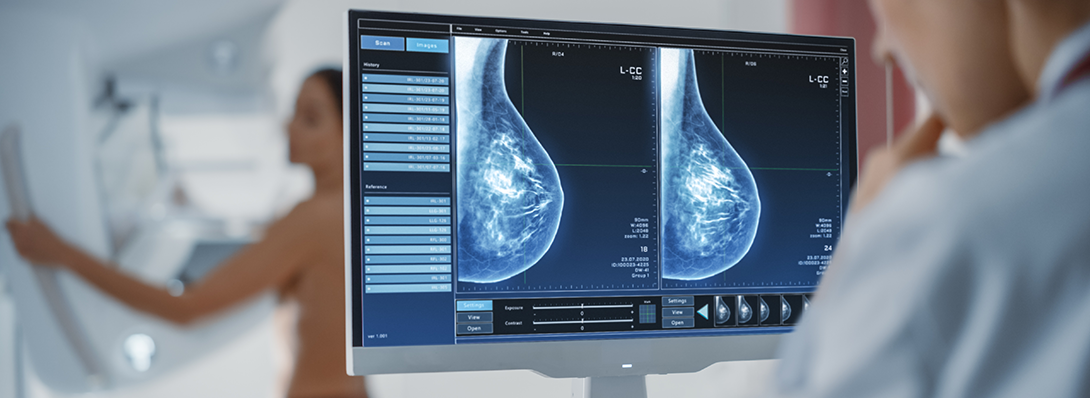Breast cancer is one of the most common cancers affecting women worldwide. While treatment options for breast cancer vary, radiation therapy is a crucial component. In this article, we'll explore how radiation therapy is used to treat breast cancer, the different types of radiation therapy, when it's recommended, managing side effects, and what to expect during a radiation oncology visit.
How is Radiation Therapy Used to Treat Breast Cancer? Radiation therapy for breast cancer uses high-energy X-rays or other particles to target and destroy cancer cells in the breast. This treatment is a localized approach, primarily focused on the affected breast. The process involves:
- Consultation:Before starting radiation therapy, patients meet with their medical team to discuss the treatment plan. This plan is personalized to the individual and takes into account factors like the type and stage of breast cancer.
- Simulation: During simulation, a patient is positioned for radiation treatment. Special imaging, like CT scans, helps the radiation oncologist precisely target the tumor while sparing nearby healthy tissues.
- Treatment Sessions:Radiation therapy typically consists of daily sessions over several weeks. The radiation oncologist administers the treatment, and it's painless and invisible.
- Monitoring: Throughout the treatment, the medical team closely monitors the patient's progress to ensure effectiveness and address any side effects.
Types of Radiation Therapy for Breast Cancer
There are two primary types of radiation therapy for breast cancer:
- External Beam Radiation: This is the most common form of radiation therapy. It delivers radiation from outside the body using a machine. Techniques like 3D conformal radiation therapy, intensity- modulated radiation therapy (IMRT), and image-guided radiation therapy (IGRT) help precisely shape the radiation beams, minimizing damage to surrounding healthy tissues. Rapid ARC is a high precision radiation another effective technique for treating breast cancer.
- Brachytherapy (Internal Radiation): Unlike external beam radiation, brachytherapy involves placing a radioactive source directly inside the breast near the cancer site. This internal approach allows for higher doses of radiation with minimal exposure to healthy tissues. Brachytherapy is often recommended after lumpectomy for certain patients, and it can be completed in a shorter timeframe.
When is Radiation Therapy Used for Breast Cancer?
Radiation therapy is commonly used in the following scenarios:
- After Lumpectomy: Following breast-conserving surgery, radiation therapy is typically recommended to reduce the risk of cancer recurrence in the treated breast.
- After Mastectomy: In some cases, radiation may be advised after mastectomy, particularly if the cancer was large or involved nearby lymph nodes.
- Neo-adjuvant Treatment: Radiation can be used before surgery to shrink tumors, making them easier to remove.
- Adjuvant Treatment: After surgery, radiation therapy can further reduce the risk of recurrence in the breast or chest wall.
Managing the Side Effects of Radiation Therapy for Cancer Treatment
While radiation therapy is a crucial part of breast cancer treatment, it can have side effects.
Common side effects include skin changes (redness, peeling), fatigue, and breast swelling. Patients
should communicate openly with their medical team to manage these side effects effectively. They
may recommend creams, dressings, or pain relief medications to alleviate discomfort. It's essential
to follow the advice of your healthcare providers to minimize side effects and ensure the best
possible outcome.
What to Expect at Your Radiation Oncology Visit?
Before starting radiation therapy, patients will meet with their radiation oncologist and the
treatment team. This initial consultation is an opportunity to discuss the treatment plan, address any
concerns, and ask questions. During the simulation process, you'll be positioned for treatment, and
special imaging will be used to create an accurate treatment plan. Expect a series of daily treatment
sessions, where you'll lie on a treatment table, and the machine will deliver the radiation precisely as
planned. Throughout the treatment, the medical team will monitor your progress and adjust the
treatment as needed.
In conclusion, radiation therapy is a valuable tool in the fight against breast cancer. It targets cancer cells while preserving healthy tissue, offering an effective and localized approach to treatment. By understanding the types of radiation therapy, when it's recommended, managing side effects, and what to expect during visits, patients can navigate their breast cancer treatment journey with confidence.?

Dr. Rathnadevi R Senior Consultant – Radiation Oncology





.png)



